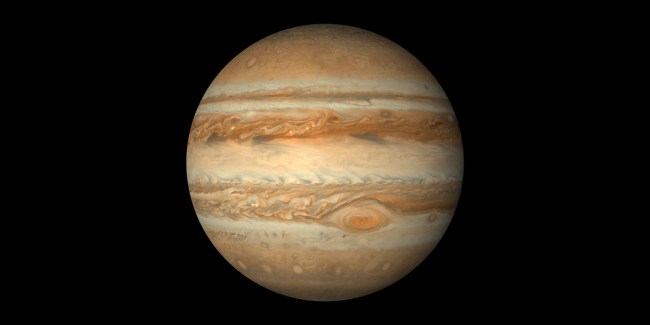
iStockphoto / Martin Holverda
Something very large smashed into Jupiter and it was so big that amateur astronomers on Earth were able to see the bright white flash at the time of impact.
An unidentified object slammed right into the side of the gas giant last week. On August 7, amateur astronomer Ethan Chappel was looking at Jupiter at the right second and took footage of something big slamming into the gas giant planet.
Here's an animation that's more representative of how fast the flash on #Jupiter occurred. Unfortunately, I couldn't make this work without cutting out 6 frames for every 7. pic.twitter.com/POQynVOlA8
— Ethan Chappel (@ChappelAstro) August 8, 2019
While it was an enormous impact, the collision did not seem to leave any atmospheric scars on the biggest planet in our solar system.
Post-flash images of #Jupiter on August 7th, while I was still oblivious to what happened earlier. No visible sign of an impact scar. pic.twitter.com/iYPM102HFM
— Ethan Chappel (@ChappelAstro) August 9, 2019
The collision created an explosion and a bright white flash that was viewable from Earth. Scientists are not completely positive what crashed into Jupiter, but most believe it was a large meteor.
“Another impact on Jupiter today,” astronomer Dr. Heidi B. Hammel wrote on Twitter. “A bolide (meteor) and not likely to leave dark debris like SL9 did 25 years ago.”
Another impact on Jupiter today (2019-08-07 at 04:07 UTC)! A bolide (meteor) and not likely to leave dark debris like SL9 did 25 years ago. Congrats to Ethan Chappel (@ChappelAstro) on this discovery and H/T to Damian Peach (@peachastro) for the report https://t.co/lj38ncBZuI
— Dr Heidi B. Hammel (@hbhammel) August 7, 2019
“SL9 is Comet Shoemaker-Levy 9, which famously impacted Jupiter in 1994,” CNET wrote. “Hammel led the team that used the Hubble Space Telescope to study the impact and how the planet’s gassy atmosphere responded.”
In other Jupiter news, the Hubble Space Telescope captured a magnificent image of the gas giant on June 27, 2019. NASA said the new image “reveals the giant planet’s trademark Great Red Spot, and a more intense color palette in the clouds swirling in Jupiter’s turbulent atmosphere than seen in previous years. The colors, and their changes, provide important clues to ongoing processes in Jupiter’s atmosphere.”
The bands are created by differences in the thickness and height of the ammonia ice clouds. The colorful bands, which flow in opposite directions at various latitudes, result from different atmospheric pressures. Lighter bands rise higher and have thicker clouds than the darker bands.
https://twitter.com/WorldAndScience/status/1160253268964061185